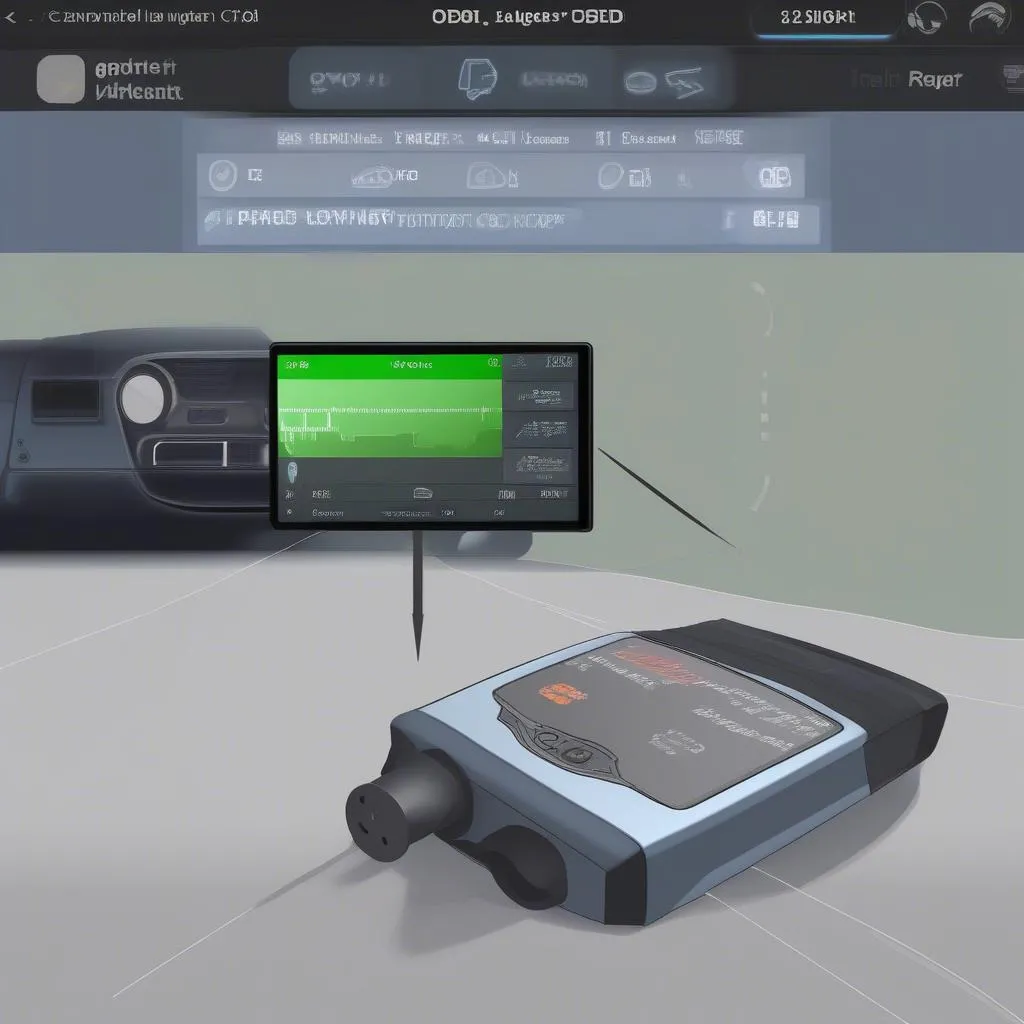Have you ever wondered what your car’s fuel mixture is doing? It’s a fascinating world of engine efficiency and performance. The fuel mixture is one of the key elements that determine how smoothly and efficiently your car runs. But figuring out the exact fuel mixture is a bit of a mystery, unless you know how to use a scan tool. This is where Diag XCar comes in! We’re going to explore the world of scan tools and how they help you unlock the secrets of your car’s fuel mixture.
Why is Fuel Mixture Important?
Let’s imagine you’re a mechanic, working on a car that’s having trouble starting. It coughs and sputters, refusing to cooperate. What’s the first thing you do? You check the fuel mixture, right? That’s because the fuel mixture is like the recipe for your car’s engine. A perfect recipe creates a smooth, powerful, and efficient engine. But if the mixture is off, the car will suffer.
Now, think about it from a driver’s perspective. You’re on a long road trip, cruising down the highway. Suddenly, you notice the car is sluggish and the engine feels strained. What’s going on? It could be a problem with the fuel mixture! The fuel mixture tells us how rich or lean the air-fuel mixture is in your car’s engine. A rich mixture means there is more fuel than air, while a lean mixture has more air than fuel.
The fuel mixture is a key indicator of the engine’s performance. It tells us about:
- Fuel Efficiency: A well-balanced fuel mixture maximizes fuel efficiency, saving you money at the gas pump.
- Engine Power: A perfect fuel mixture gives your engine the power it needs to accelerate smoothly and effortlessly.
- Emissions: Proper fuel mixture ensures cleaner emissions, reducing pollution.
How To Read Fuel Mixture On A Scan Tool
The fuel mixture is a complex concept, and deciphering it requires specialized tools. That’s where scan tools come in.
Scan tools are like secret decoder rings for your car. They connect to your car’s computer, allowing you to see live data from various sensors and systems. Imagine you’re a detective investigating a crime scene. The scan tool is your magnifying glass, revealing vital clues about your car’s health.
So, how do you read the fuel mixture on a scan tool?
-
Connect the Scan Tool: First, you need to connect the scan tool to your car’s OBD-II port, usually located under the dashboard.
-
Select Fuel Mixture Data: Once connected, navigate through the scan tool’s menu to access the live data stream. Look for parameters like “Fuel Trim,” “Short Term Fuel Trim,” and “Long Term Fuel Trim.” The scan tool may display these values as a percentage.
-
Interpret the Data: Fuel trim values indicate how the engine control unit (ECU) is adjusting the fuel mixture to achieve the ideal balance.
-
Positive fuel trim indicates the ECU is adding more fuel to the mixture (rich mixture), while negative fuel trim indicates the ECU is reducing fuel (lean mixture).
For example:
Let’s say your scan tool shows a long-term fuel trim of +10%. This means that the ECU is adding 10% more fuel than the default setting. This could indicate a problem with a sensor or a component that’s causing the engine to run lean.
 car-scan-tool
car-scan-tool
Common Questions:
What is Fuel Trim?
Fuel trim is a crucial parameter in understanding your car’s fuel mixture. It represents the adjustments the engine control unit (ECU) makes to the fuel mixture to ensure optimal combustion.
Fuel trim values, displayed as percentages, represent the amount of fuel added or removed from the ideal mixture.
- Short-Term Fuel Trim: Represents adjustments made by the ECU based on real-time sensor readings, such as the oxygen sensor.
- Long-Term Fuel Trim: Reflects adjustments made by the ECU over a longer period, based on various sensor data and driving conditions.
How to Read Fuel Mixture Data:
Remember, the specific values displayed on your scan tool might vary depending on the make and model of your car and the scan tool you’re using. But understanding the basic concepts of fuel trim and how to interpret the data can help you diagnose potential issues.
How to Fix Fuel Mixture Problems:
Identifying fuel mixture issues requires expert diagnosis. A trained mechanic can use a scan tool to analyze the fuel trim values and pinpoint the root cause of the problem. This might involve inspecting sensors, cleaning injectors, or replacing faulty components.
Conclusion:
Reading fuel mixture on a scan tool is a powerful tool for understanding your car’s health and efficiency. While it takes a bit of technical knowledge, the insights you gain can help you catch issues early, optimize performance, and save money on fuel.
 car-diagnostics
car-diagnostics
Remember, if you have any concerns about your car’s fuel mixture or any other issue, consult a trusted mechanic or contact us at Diag XCar. We are here to help you keep your car running smoothly!


